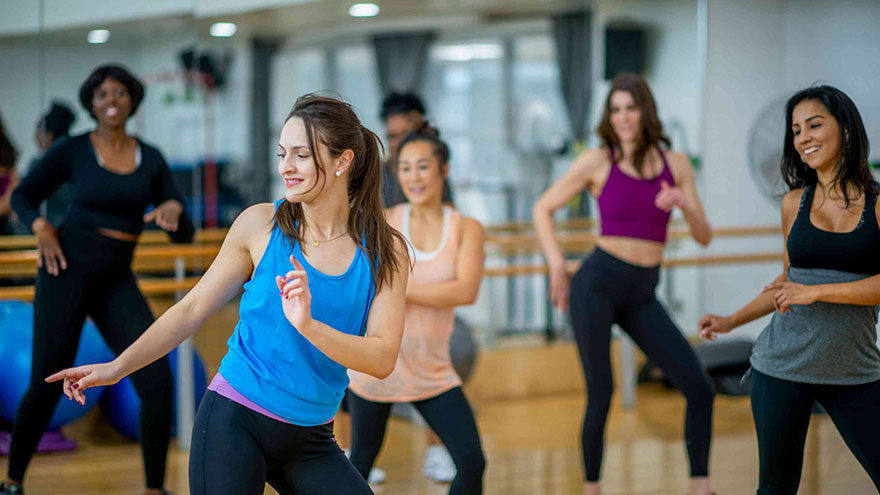How to Teach an Aerobics Class
Leading an aerobics class is a big responsibility. Your clients expect you to offer clear instruction and inspiration. Before you move to the front of the room, take steps to ensure your class is a success.
Dress professionally, arrive early to organize your music and turn off your cellphone so that you can focus on your clients. Greet everyone with a smile, introduce yourself to newcomers and offer to answer any questions.

Be Prepared
Before class, map out your routine. Plan your warm-up, three to five 32-count blocks of aerobic choreography and a cooldown. Prepare more material than you think you’ll need, in case you fly through the first blocks of your routine more quickly than you expected.
Run through the routine several times, making sure your choreography flows logically. Even if you know it cold, write down the routine and keep your notes in your gym bag; you’ll need them if you draw a blank during class. Arrange your music so that one song flows seamlessly into the next. You don’t want clients’ heart rates to drop while you fumble for the next song.
Warm Them Up
When it’s time to start, encourage everyone to find a spot on the floor. Spend about 10 minutes on your warm-up, keeping the choreography simple; stick with basic moves, minimal arms and no fancy turns. A basic warm-up might include an eight-count march forward and back; four step-touches; two grapevines and a single-single-double knee combination.
Introduce one step at a time — starting with the march forward and back — and repeat it several times before adding the next step. Keeping the warm-up simple helps your clients — and you — get into a flow and lets you gauge their fitness levels and abilities. Your general warm-up should segue into a minute or two of dynamic stretching, such as side-to-side lunges with a large arm-swing.
Pick Up the Pace
Spend 25 to 35 minutes on moderate- to high-intensity aerobics. A typical 32-count block of choreography might include a mambo front and back into two ponies; two chasses, or gliding dance steps; four “scoops” traveling front and back; one grapevine — a four-count movement that travels to the side — and two hamstring curls.
Think of every block of choreography as a layer cake; teach the first step — or layer — in the block, repeat it several times and then add the next layer. Then layer the individual blocks to achieve an even bigger cake. Always show the most basic variation of a step or movement combination before introducing turns, power moves, complicated arms and changes in direction.
Cue the next movement just before it occurs, giving participants enough time to react. Speak audibly, using an authoritative but friendly tone, and use arm and hand gestures to compliment your verbal cues. It’s generally better to face the class and let students mirror your movements, but for complicated turns, they’ll follow more easily if you’re all facing the same direction.
Cool Them Down
Transition into your cooldown. Help bring heart rates back to normal by slowing the pace of your music and doing a series of marches, step-touches and grapevines. Encourage participants to keep their movements small and to relax their arms at their sides.
If time permits, do a few core-strengthing exercises, such as planks, bicycle crunches or glute bridges. Round off the class with several minutes of static stretching, targeting the hips, glutes, thighs and calves. Hold stretches for 15 to 30 seconds, reminding participants not to bounce or force the stretch. Finally, turn down the lights, select your most mellow piece of music and take two or three deep breaths.
Invite clients to close their eyes and encourage them to exhale slowly and evenly. Thank everyone for coming and wish them a good day.
Keep Them Safe
Your clients count on you to provide a safe and positive environment. Keep music at recommended speed and volume levels. Use touch sparingly — to help with postural alignment, for example — and only with the client’s permission. Keep your speech clean and courteous and choose music and personal attire that won’t offend participants.
When a difficult situation arises — such as excessive chatting in the back or complaints about a client’s perfume — it’s your job to deal with the problem quickly and professionally. Don’t attempt to diagnose an injury, but offer to refer a client to someone who has relevant medical expertise.
You Might Also Like :: How to Increase Aerobic Capacity

